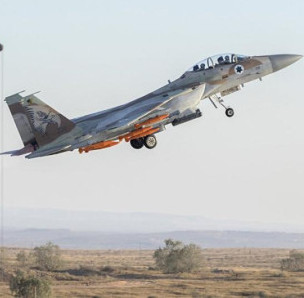The US has once again urged India to abandon the Russian S-400 air defense missile systems (ADMS) in favor of their American comparables. This came in a yesterday statement by acting Assistant Secretary of State for South and Central Asian Affairs Alice Wells. According to her, the US State Department is concerned that Moscow will profit from supplying air defense systems to India. At the same time, Wells pointed out that the main problem may be the joint use of American and Russian weapons, which is unacceptable, in her opinion.
Let us recall that in October 2018, Moscow and New Delhi signed a contract for the supply of five regimental S-400 Triumph systems worth $5.43 billion. In 2019, India pre-paid an order of $845 million. Delivery completion of the fifth regimental air defense system set is due in the first half of 2025. At the same time, the Indian side asks Moscow to speed up delivery time for the S-400s.
However, for almost two years now, the US has been seeking to argue India into refusing to buy Russian ADMS through blackmail, threats and cheap military- political demagoguery. In particular, Washington threatens New Delhi with enforcing Countering America’s Adversaries Through Sanctions Act (CAATSA) against India. This law, approved by US President Donald Trump on August 2, 2017 and made effective in January 2018, is directed against those trading with Russia, Iran, North Korea and Venezuela. It particularly concerns individuals and states that carry out crucial trade transactions with the mentioned countries, including those in the defense sector.
If this law is invoked against India, the latter will be implicitly recognized as an enemy of the United States. But apparently, this fact does not really frighten New Delhi. Why does India prefer Russian ADMS despite such heavy pressure from Washington?
There are several explanations and good reasons for New Delhi's preference. First, the United States seems to be offering India to replace the Russian S-400s with its Patriot air defense system. But let's not forget that the Americans began developing this ADMS in the mid-1960s, and its first test took place 45 years ago – in 1975. Today, regarding this air defense system, you can apparently recall the old saying about a suitcase without a handle, which is hard to bear but difficult to throw. To date, the Patriot system has a lot of "failures" and "screwups", which indicate that the complex is outdated and difficult to further modernize. The situation being what it is, the Russian S-400 systems look more advanced and a lot more effective.
Secondly, and this is probably the main thing: India pursues an independent foreign policy and does not accept sharp power or ultimatums from outside, even from the United States. It is notable that during his recent visit to Washington, Indian Foreign Minister Subrahmanyam Jaishankar said no country had the right to bar India from buying weapons wherever it wants. Presumably, this statement concerned the supply of Russian S-400 air defense systems in the first instance.
Relations between New Delhi and Moscow, be it noted, appear as a specifically privileged strategic partnership to allow Russia and India build their relations on the principle of equality and mutual respect. This fully applies to their relations in military-technical cooperation.
The fact of continued Russian-Indian successful collaboration in this area was confirmed by last November visit to Moscow by Indian Defense Minister Rajnath Singh, who met with his Russian counterpart Sergei Shoigu. Although the details of those talks have not been disclosed, it is not hard to assume that the ministers discussed the current state and future of military and military-technical cooperation between the two parties. As the Indian Economic Times newspaper reported back in those days, topping Shoigu-Singh meeting agenda was the issue of accelerating supplies of Russian Triumph complexes to India.
The point to be emphasized is that nowadays, over 70% of weapons and military equipment of the Indian army, air force, and navy are of Russian and Soviet production. Every year, Russia supplies India with weapons and military equipment worth several billion dollars. Currently, a number of significant and major projects are being implemented between Russia and India as part of their military and technical cooperation. Apart from the S-400 deal, this involves the creation of Project 11356 frigates for the Indian Navy, the purchase of the Igla-S portable air defense systems worth $1.5 billion by New Delhi, and preparations for the production and subsequent assembly of Kalashnikov assault rifles and SKD kits for 464 T-90MS tanks in the territory of India. Negotiations are also underway to strike a $3 billion deal to lease the second Russian nuclear submarine out to the Indian side. Efforts continue to build a joint Russian-Indian air-launched hypersonic missile, the Brahmos-2, with its tests planned to be wound up by 2024.
Such a scope of military-technical cooperation between Moscow and New Delhi certainly worries Washington and makes it feel nervous. Hence the threats to use the CAATSA law against India. However, as a similar case with the delivery of the S-400 to Turkey demonstrates, the US has never risked invoking this law against Ankara. Washington limited itself to a modest "separation" of the Turkish military from affiliation with the F-35 fighter program. Towards India, which is not a military ally of the United States and much less a member of NATO, the American side does not even have such leverage on New Delhi as it has on Ankara.
So, Washington's diplomatic demarches, such as the recent statement by Ms. Wells, are only indicative of the lack of efficient arguments at the US disposal. In this regard, it is safe to assume with great confidence that Russian-Indian military-technical cooperation, including the supply of S-400 air defense systems to India, will be conveniently continued in the future as well.









